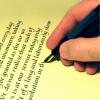Copperplate With A Fountain Pen
-
Forum Statistics
355k
Total Topics4.6m
Total Posts -
Member Statistics
128,101
Total Members18,857
Most OnlineNewest Member
Mal from Melbourne
Joined -
Images
-
Albums
-
GlenV
- By GlenV,
- 0
- 2
- 77
-
Bad Gateway
- By A Smug Dill,
- 0
- 6
-
namrehsnoom-16
- By namrehsnoom,
- 0
- 0
- 100
-
USG 7
- By USG,
- 0
- 0
- 96
-
Photo for my Posts 2
- By AceNinja,
- 0
- 0
- 30
-





.jpg.bb75364a26b18a63496819477f579f15.jpg)

.jpg.f469fe4ce9d029f5f4b2776c7a938b9a.jpg)
.jpg.3fd12eb2f3773b8452f3b3bf5055df09.jpg)
.jpg.41122b492d1863808e9b48a742692105.jpg)
.jpg.88058c2f39f1d1fab291eb5e82a6e27d.jpg)







.thumb.jpg.f07fa8de82f3c2bce9737ae64fbca314.jpg)



.thumb.jpg.331e554113c33fb39d5bf3233878978a.jpg)





Recommended Posts
Create an account or sign in to comment
You need to be a member in order to leave a comment
Create an account
Sign up for a new account in our community. It's easy!
Register a new accountSign in
Already have an account? Sign in here.
Sign In Now